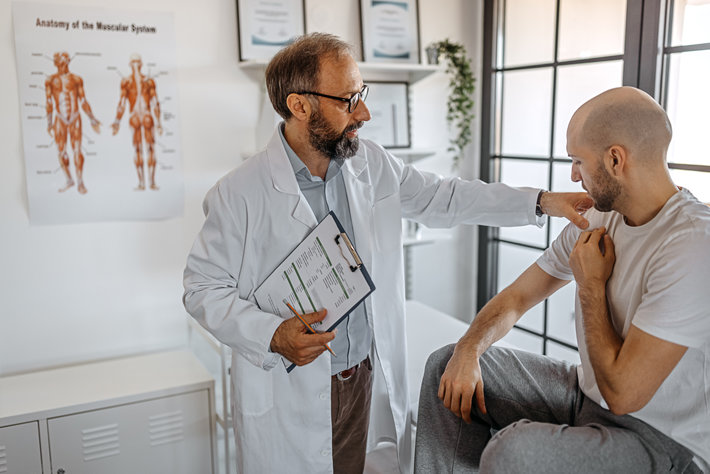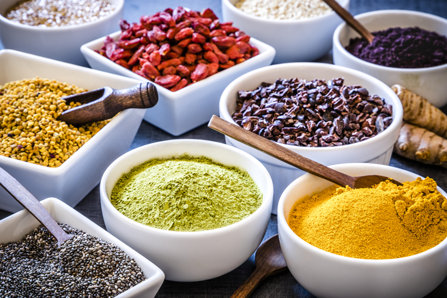CDC Guidelines Suggest More Conservative Opioid Prescribing, but Is it Enough?

In 2016, the Centers for Disease Control and Prevention published and distributed a crucial document on prescribing guidelines for physicians and other practitioners who were prescribing opioid pain relievers to their patients. Given that the guidelines suggested much more conservative prescribing than doctors were engaging in at that time (and since many doctors heeded the warnings of the CDC and thusly changed their prescribing habits), the distribution of CDC guidelines was an effective tool for reducing the overprescribing of opioids.
However, too many Americans are still turning towards painkillers for pain relief, only to find themselves addicted to those very same drugs weeks or months later.
Is it time for doctors to begin offering their patients alternatives to painkillers?
The CDC’s Guidelines on Opioid Prescribing
It’s been almost six years since the CDC released its recommendations on opioid prescribing. Researchers from the University of Michigan Medical School in Ann Arbor determined that, since 2016, overall opioid prescribing dropped at least 3%, and the average duration of prescriptions dropped 10%. While there were likely other factors that influenced doctors to reduce numbers of prescriptions and their duration, the study found that the CDC’s guidelines certainly had a compelling effect.
As for a look at the guidelines themselves, the CDC put forth clear language on how important it was that doctors proceed with caution regarding opioid painkillers. In their document, the CDC authors warned specifically against high dosages of opioid pain relievers and long durations of prescribing. They used language like, “Opioids are not first-line therapy” and “Non-pharmacologic therapy and non-opioid pharmacologic therapy are preferred for chronic pain.” Messaging of that nature indicated that other options to reduce pain should be tried before physicians resorted to prescribing an opioid.
If other non-pharmacological and non-opioid measures did not work, the CDC strongly encouraged doctors to prescribe the lowest effective dosage of pain relievers for the shortest duration possible. The CDC authors suggested that a three to seven-day period is usually more than enough time to treat acute pain symptoms. After the three to seven-day period, the patient could then switch to non-opioid pain relief options.

The CDC also goes on to say that physicians should use strategies that mitigate risk, like increasing their number of interactions with patients, screening patients for previous addictions by using Prescription Drug Monitoring Program data and one-on-one screening sessions and using urine drug testing to determine if a patient was misusing other substances.
The above measures can help reduce the risks inherent in prescribing opioid painkillers. Furthermore, the evidence suggests that opioid prescribing is down. Both of these circumstances (reduced prescribing and safer prescribing) are steps in the right direction.
However, not only are prescribing levels still much higher than they were in the 1990s (though reported pain symptoms have not increased since then), but thousands of Americans still die from overdoses on pain meds every year (more on that later). Is it time for doctors to take the CDC’s first recommendation much more seriously? I.e., is it time for doctors to begin offering patients alternatives to opioid pain meds? To never put patients on such addictive drugs in the first place?
Alternative Pain Relief Approaches to Discuss with Your Doctor
While this article’s author does not pretend to offer any medical advice or suggestions, there are many alternative remedies to pain relief that patients experiencing pain can and should discuss with their doctor. Since a wide swath of pain-related symptoms and sensations result from inflammation, natural anti-inflammatories and health practices may help reduce such unwanted symptoms.

From the Arthritis Foundation, examples of natural anti-inflammatory practices include:
- Acupuncture
- Massage Therapy
- Tai Chi
- Yoga
- Healthy Weight Loss
- Physical Therapy
- Topical Gels
- Transcutaneous Electrical Stimulation (TENS)
On top of the above, day-to-day lifestyle practices that address inflammation-related pain, there are supplements and nutritional additives that can help address inflammation internally:
- SAM-e (S-adenosylmethionine, available as a tablet or capsule)
- Boswellia Serrate (Indian frankincense)
- Capsaicin peppers
- Turmeric/Curcumin
- Avocado
- Cat’s Claw
- Fish Oil (or Omega-3 fatty acids EPA and DHA)
- Gamma-Linolenic Acid
- Ginger
The American Society of Anesthesiologists backs up much of what the Arthritis Foundation has written on the subject of non-opioid pain relief. The ASA also suggests that patients should consider surgery to address the root cause of their pain. If that is not an option, the ASA also suggests patients talk to their doctor about injections and nerve blocks, radio wave therapy, spinal cord stimulation, and pain pumps.

Yet another resource, the Harvard Medical School, encourages patients to explore pain management techniques that do not necessarily include opioids. Harvard put forth additional options like cold and heat applications, proper diet and exercise, occupational therapy, Yoga, biofeedback, music therapy, and breathing exercises, all of which may be able to reduce pain levels.
Last but not least, Indigenous medicine techniques have been healing human beings for thousands of years, long before opium poppies were ever brought to the U.S. as a pain reliever. Some natural remedies for pain and other bodily discomfort used in Indigenous cultures include:
- Yarrow
- Sumac
- Blackberry
- Rosemary
- Mint
- Red Clover
- Black Gum Bark
- Cattail
- Greenbriar
- Hummingbird Blossom
- Wild Rose
- Saw Palmetto
- Sage
- Wild Ginger
- Slippery Elm
- Lavender
- Prickly Pear Cactus
- Honeysuckle
- Ashwagandha
- Mullein
- Licorice Root
- Uva Ursi
- Devil’s Claw
The Opioid Addiction Epidemic; Why it is Important to be Extremely Cautious with Painkillers
The opioid epidemic began in the late 1990s when pharmaceutical manufacturers convinced doctors to increase prescribing trends with addictive painkillers like OxyContin, promising doctors that the meds were nonaddictive. It took several years for the medical community to realize that the pharma companies had lied and that opioid painkillers were not only addictive but also potentially lethal. But by then, millions of Americans were already hooked on painkillers, and thousands had already died from accidental overdoses. From the CDC’s estimations, nearly 500,000 people died from opioid overdoses between 1999 and 2019.
From the National Institute on Drug Abuse, it is estimated that even today, with welcome reductions in prescribing, about 14,000 people still die from prescription opioid overdoses every year. Not only is it crucial that the American people (with the help of their doctors) find and utilize safe alternatives to pain relief, but it’s also essential that those who are currently addicted to opioid pain relievers seek professional help.

Addiction Treatment; A Way out for Those Addicted to Painkillers
According to CDC data, opioids are the leading cause of drug-related death in America. Approximately 70% of all drug-related deaths include at least one opioid as a partial or complete cause of that death. This is why it is so vitally important to help opioid addicts get into qualified, residential drug treatment centers as soon as possible. With a drug as lethal as opioids, there is no time to waste.
Drug addiction is a life or death crisis. Anyone can fall prey to addiction, and anyone can lose their life to drugs or alcohol. Often, those who die from drug overdoses are those that one may have thought least likely to perish, those who seemed to have their lives most in control. That’s why there is never any justification for being addicted to a mind-altering substance, never any justification for putting off treatment. If someone you care about is misusing drugs please make sure they get help today.
Sources:
- https://ihpi.umich.edu/news/first-time-opioid-prescriptions-got-shorter-less-potent-after-cdc-guidelines
- https://jamanetwork.com/journals/jamanetworkopen/fullarticle/2781924
- https://www.cdc.gov/drugoverdose/pdf/guidelines_at-a-glance-a.pdf
- https://www.ncbi.nlm.nih.gov/books/NBK279298/
- https://www.arthritis.org/health-wellness/treatment/complementary-therapies/natural-therapies/8-natural-therapies-for-arthritis-pain
- https://www.arthritis.org/health-wellness/treatment/complementary-therapies/supplements-and-vitamins/supplements-for-arthritis
- https://www.asahq.org/madeforthismoment/pain-management/non-opioid-treatment/
- https://efotg.sc.egov.usda.gov/references/public/GA/23MedicinalPlantstheNativeAmericansUsedonaDailyBasis.pdf
- https://www.cdc.gov/opioids/basics/epidemic.html#
- https://www.drugabuse.gov/drug-topics/trends-statistics/overdose-death-rates


 ®
®